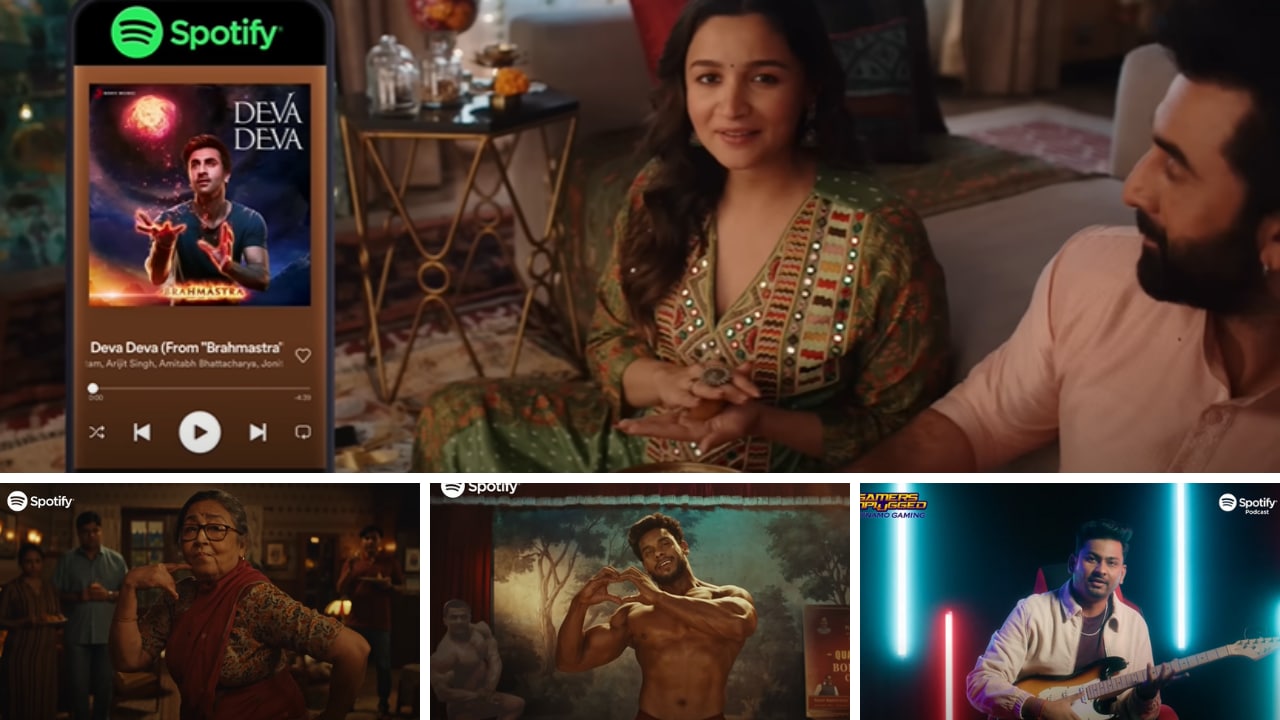Swedish audio streaming and media service platform Spotify is a fifteen-year old company which entered the Indian market in 2019. So far, Spotify India has worked with over 250 brands. According to Arjun Ravi Kolady, head of sales, Spotify India, “In the last few years, video streaming has exploded where people have moved towards this medium. During Covid-19, listening to music in cars began to decline and home speakers became the third most used platform for listening. This was mainly driven by millennial parents. Even listening via mobile bluetooth stabilised during the pandemic. These behaviours got stuck and there has been no change witnessed so far.”
As per Statista, the audio advertising segment in India is projected to grow by 3.72 percent (2022-2027) which would result in a market volume of USD 848.50m in 2027.
Speaking to Storyboard18, Kolady also touches upon brands that have successfully made use of this medium and how audio advertising would witness further demand in the coming years.

Edited Excerpts
Can you share a few examples of how audio advertising has evolved?
Advertising has been a part of Spotify’s product suite and offerings for a very long time. The first three brands that were active on Spotify since day one when we hardly had any users on the platform were OnePlus, Budweiser and Brand USA. The top three categories that continue to be Spotify’s primary verticals in India and globally are media and entertainment, FMCG and tech.
The brands that advertised their offerings via audio are Mondelez, Xiaomi, Netflix, Intel, Oppo, Google, Meta (then known as Facebook), L’Oréal, Amazon Prime Video and many more. The reason I mentioned Mondelez is because we won some of the awards for the audio advertising we did for the brand. The brand was also the first to try many of our new features.
The first campaign in 2020 was ‘How far will you go for love?’ and its second iteration in 2021 was ‘How far will you go to make someone blush?’ This was specifically for their offering, Cadbury Silk. The insight of Mondelez was around music and love going hand-in-hand. We created an experience whereby people could hide a secret message inside a playlist and they could send it to their ‘special someone’. A year later, people were allowed to put a voice note inside the playlist. It was a great mix of innovation, tech, insight and creativity.
What about the media and entertainment brands?
Spotify’s audience is highly attuned to streaming services. Netflix and Amazon Prime Video, who are in the streaming business have done some fantastic work too. Such brands have three objectives. Either they want to show the breadth of their library or they want to help people find more of what they love. The other objective is around the launches of new shows.
We have a tech called Spotify API. The API allows advertisers to build personalised experiences based on users’ listening behaviour.
For Netflix’s Stranger Things (science fiction horror drama television series), we had created the ‘Upside down’ playlist (The playlist consists of 50 songs which combine some of the most played tracks with Stranger Things’ most iconic bops.)
Let me give an example of Netflix’s campaign ‘Something for Everyone’. The core promise of this campaign was based on the music listening behaviour of people on Spotify, the brand will identify the right shows on Netflix for the listeners.
We also have brands working with artists. For example, H&M did a campaign with singer Armaan Malik where he was the face of the brand’s Linen Menswear Collection. Here, the brand got ads recorded by the singer. Brands make use of associations with celebrities or artists in many ways which even includes using their voice for recording the ads which will be run on Spotify.
You had mentioned that programmatic advertising became a significant part of Spotify this year. What is your take on programmatic ads?
Programmatic advertising is not a challenge but an opportunity for Spotify. We have been integrated with most programmatic buying channels. The number of avenues to reach the consumers has exploded which has complicated the life of a marketer or a media planner. I think programmatic advertising helps to solve some of these problems for agencies, clients and publishers like us because it drives a lot of accountability, transparency, control and flexibility.
At this stage, Spotify India is a premium Gen Z urban platform. When advertisers and agencies work with us programmatically, they are able to witness the benefits of having a more sophisticated and valuable audience as a part of the larger media mix. If an advertiser has data about their customers and their shopping behaviour, using programmatic channels, they are able to layer that onto Spotify ads to drive better return on investment (ROI).
Are short-form video platforms like TikTok a threat to audio?
Spotify is in many markets where TikTok already exists. Wherever TikTok and Spotify are present, we believe there is a clear space for audio and short video consumption.
What’s your outlook on demand for audio advertising in the coming years?
At present, Spotify is a niche platform and there are two things that keep it niche. First is the scale of the audience. Second is education i.e. how do we make sure what are the best ways of mentoring, the best ways of creating a great audio ad or targeting an audience. This is explained to our clients or our agency partners.
Radio was the first broadcast medium where people were basically reading newspapers in front of the mike. When advertising via television began to take place, it was a radio announcer with a camera pointed at him or her. Once YouTube entered the scene, people were just streaming television commercials on the platform.
From a marketing perspective, audio is new, though it has been around for a while. What is the requirement today is garnering the attention of people at the right time with the right message in a positive environment. Given the way we have seen our business grow over the last three years, we are super optimistic about it.
